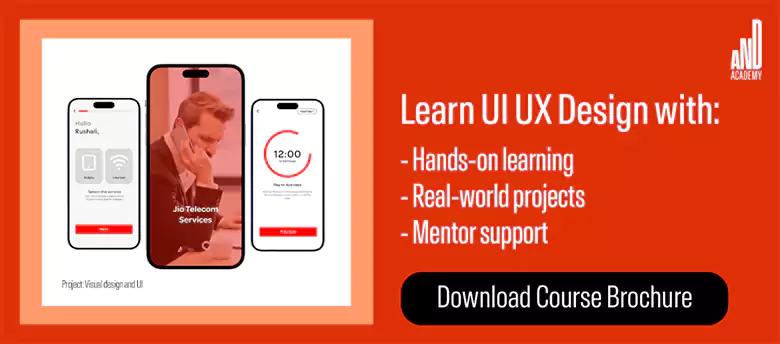Accessibility is a key part of designing usable interfaces that everyone can use. But what is it and how do you apply it to your designs? Find out with our complete guide.
With websites, apps, and services competing for users’ attention, creating accessible user experiences is no longer optional—it’s a necessity. Accessibility to digital products ensures that all users, regardless of their abilities or impairments, can access and interact with digital products easily and effectively.
If you’re curious to find out more about accessibility in UX design and how to apply it to your own designs, then read on. In this comprehensive run-through, we unpack the core principles of accessibility, its application, and the significant impact it can have on every user’s experience with your products and brand. We’ll also be covering the business advantages of prioritizing accessibility and the importance of legal compliance in this area.
Contents:
- What is accessibility in UX design?
- Why does accessibility in UX design matter?
- Core principles of accessibility in UX design
- What’s the difference between accessibility and usability?
- What are the business benefits of accessibility?
- Disabilities and impairments to consider when designing for accessibility
- 9 tips and best practices for designing with accessibility in mind
- Conclusion
Ready to learn everything you need to know about accessibility in UX design? Then let’s dive straight in.

What is accessibility in UX design?
Accessibility in UX design is the practice of designing and building digital products that can be used with ease by as many different people as possible, including those with learning needs or disabilities. When accessibility is the focus of a digital product’s design, everyone, irrespective of their abilities or limitations, can seamlessly navigate and interact with that interface, its content, and functions.
Although in the past we might have thought of accessibility as simply referring to larger text options or video captions, these days it covers a much wider range of functions and interactions, reflecting the different learning needs and disabilities of users. The topic is typically broken down into visual, auditory, motor, and cognitive accessibility, as well as assistive technology compatibility. When designing digital interfaces, UX designers aim to address this broad spectrum of accessibility needs to ensure the largest number of people can use and enjoy the service on offer.
Why does accessibility in UX design matter?
The answer to this question is simple: when websites and apps are designed to be accessible to all, everyone can use them. Accessibility plays a crucial role in UI UX design When accessibility is not prioritized, different groups are excluded from enjoying and benefiting from the products and services on offer. When this is the case, not only are those with accessibility needs prevented from using those services, but the experience itself can feel exclusionary, leaving them to look elsewhere.
From a business perspective, neglecting accessibility can equate to a loss of customers, trust in the brand, and potential recommendations. Poor accessibility can also negatively impact the brand’s reputation, as, when others hear of the bad experience that users with accessibility needs have had, they too decide to go elsewhere or even boycott the organization. It’s also important for organizations to recognize the legal responsibility they have to design for accessibility. When these responsibilities are not adhered to, they may face lawsuits.
In contrast, when different accessibility needs are catered to and made a priority, an organization has the opportunity to not only improve the overall user experience for all users by making interfaces more intuitive, efficient, and enjoyable but also to expand their audience to include millions of people with varying abilities. When done effectively, through accessibility a company can demonstrate its commitment to social responsibility, diversity, and equal access, helping it carve out a reputation as an inclusive and fair brand.

Core principles of accessible UX design
To understand accessibility in UX design, it’s helpful to get to know the core principles that are used to guide it: Perceivable, Operable, Understandable, and Robust. Let’s take a look at the details of each and how they can be used to inform good UX design decisions.
1. Perceivable
The “perceivable” principle is all about the senses. More precisely, it refers to how users perceive your website or app’s content via sight, sound, and touch. The principle states that information should be made available to users in a range of different formats so that everyone has an equal opportunity to digest it. For example, text alternatives for images can help those who are visually impaired to understand what an image represents, while closed captions on videos help those with hearing difficulties access information they cannot hear.
2. Operable
Navigation and interaction are core functions of most digital interfaces. This is where the “operable” principle comes in. Users of all abilities should be able to navigate and interact with an app or website irrespective of their preferred input method. To achieve this, UI UX designers should create products or services that can be navigated using a keyboard, touch, or assistive devices. Interactive elements, like buttons, for example, should be accessible via keyboard shortcuts or screen readers. When designing interfaces with the “operable” principle in mind, designers need to ensure users have enough time to complete tasks using their preferred input method, too.
3. Understandable
Comprehension is the key to good UX design. This is where the “understandable” principle comes in. By using simple, precise language, a logical content hierarchy, and consistent navigational cues, designers support users with cognitive disabilities in reaching their goals with an app or on a website. As is the case with so many of these accessibility principles and practices, this principle doesn’t just help those with accessibility issues, it improves the user experience for all those unfamiliar with the interface.
When issues arise, the “understandable” principle also dictates that designers use clear instructions, error messages, and recovery options. This ensures that users know exactly what to do to overcome the problem.
4. Robust
Last but not least, we have the “robust” principle. What this means is focusing on creating designs that work seamlessly with other devices. This includes ensuring compatibility with the assistive tools that those with accessibility issues frequently utilize. Designers and developers should therefore prioritize the use of standard web technologies that work with screen readers, voice recognition software, and other similar tools. The “robust” principle also encourages the creation of designs that enable long-term accessibility for all users, making sure the product can be adapted to future technologies and standards.

What’s the difference between accessibility and usability?
While many of us might use the terms “accessibility” and “usability” interchangeably, these two words, while similar, have quite different meanings. Accessibility is when a digital product has been designed to cater to users of various disabilities, in doing so ensuring that everyone has equal and seamless access to all the content and functionalities of a platform. Usability, on the other hand, is a term used to describe how easy and efficient a product is to use and interact with for all users, regardless of the users’ abilities or limitations.
Put simply:
Accessibility – inclusivity for users with specific needs, addressing specific barriers
Usability – overall positive user experience for everyone, focusing on general ease of use
What are the business benefits of accessibility?
Accessible design brings about considerable benefits to users, both those with impairments and disabilities and those without. But what’s the benefit to organizations that adopt accessibility principles into their UX design practices? We’ll run through the biggest advantages here.
1. Wider audience reach
Possibly the biggest benefit for an organization that prioritizes the creation of accessible websites and apps is that it can tap into a much larger and more diverse audience. This includes older people, people with temporary impairments, and those with disabilities. When this is done successfully it increases revenue, engagement, repeat customers, and recommendations. It also boosts the company’s reputation as an inclusive organization.
2. Improved SEO and search engine rankings
While the primary reason for incorporating accessible practices into your design approach is to make your website usable for everyone, a positive additional side effect is that it boosts your site’s search engine optimization (SEO), too. Accessibility rules of thumb such as using alt-text for images and incorporating well-structured content into the body of a site make it rank more highly in search engine results which in turn drives more organic traffic to those pages.
3. Legal compliance and risk mitigation
Businesses are legally obliged to adhere to accessibility standards. By complying, they reduce the risk of lawsuits or fines for discrimination against different groups. By addressing these issues from the get-go, companies can prevent reputational damage that can come about from legal challenges.
4. Better usability for all users
It’s often the case that when accessibility is prioritized by the design team, all users see improvements in their experience with a platform or digital service. This tends to result in higher levels of satisfaction and engagement across the board.

Disabilities and impairments to consider when designing for accessibility
Let’s take a look at some of the most common impairments you’re likely to come across, what these involve, and the steps you can take to minimize friction and improve accessibility with your digital product’s design.
1. Visual impairments
A visual impairment is when an individual has limited or no vision. There are varying degrees of visual impairments: low vision, blindness, color blindness, blurred vision, tunnel vision, and loss of central vision. Those with visual impairments require the designer of a digital product to accommodate screen readers and incorporate high-contrast color schemes and alt-text into their designs. Text resizing and screen magnification options can also help to support users with low vision.
2. Auditory impairments
An auditory impairment is when someone is deaf or hard of hearing. Different types of auditory impairments include:
- Hearing loss, which refers to partial or total inability to hear sounds
- Deafness, which is the complete loss of hearing
- Tinnitus, whereby individuals experience a ringing sound in the ears
Users with auditory impairments often rely on visual or tactile feedback instead of sound. Designers can support those with auditory impairments by providing captions and transcripts for videos, avoiding sole reliance on audio cues, and designing interfaces with visual or text-based alternatives.
3. Motor impairments
A motor impairment refers to when a person has difficulty controlling or coordinating their physical movements. This can manifest in several ways, however, the most common include limited dexterity, mobility impairments, and tremors or spasms. Users with motor impairments can struggle to effectively use a mouse, keyboard, or touch gestures. For this reason, designers need to create a design that is fully accessible using a keyboard and provides a range of different input methods, such as voice commands or switch controls. When users can tailor the settings on the platform to better meet their motor needs, this also creates a more accessible and pleasant user experience.
4. Cognitive impairments
A cognitive impairment is a condition that impacts a person’s ability to think, learn, remember, make decisions, or reason, with impairments ranging from mild to severe. Some common types of cognitive impairments include memory impairments, attention deficits, learning disabilities, and executive function impairments. In a design context, it’s crucial to simplify content, provide direct and clear instructions, provide consistent navigational cues, and divide tasks into small steps when catering to the needs of those with cognitive impairments. Brief, direct error messages and concise feedback also support users when trying to complete tasks.

9 tips and best practices for designing with accessibility in mind
How can you improve the accessibility of your designs? We’ve got some tips and best practices that you can implement to support all of your users and improve their experiences with your product or service.
1. Provide text alternatives for non-text content
For those with visual impairments, it’s important to give every image, video, and icon a descriptive alt-text. This means that screen readers can pick up on the meaning of the image and relay it back to the user.
2. Use color contrast
Color contrast refers to when the text and background colors of an interface are highly contrasting. This ensures the content is legible to users with color blindness or impaired vision and helps the text to stay legible in different lighting conditions.
3. Use clear language
A good rule of thumb for the content of your designs is to always use clear, simple, and direct language. This makes your text easier for all users to understand, but it also particularly helps those with cognitive disabilities. Don’t use jargon, unfamiliar phrases, or complex sentence structures as this will confuse readers and put them off your service.
4. Design for keyboard navigation
Users with motor impairments often use a keyboard to navigate and interact with an interface instead of a mouse or trackpad. For this reason, ensure your design accommodates keyboard navigation.
5. Create resizable and responsive layouts
UX designers should always design pages with different screen sizes and resolutions in mind. For users with accessibility issues, this is even more important as it allows them to zoom in and adjust settings without disrupting the layout. Resizable and responsive layouts also enable easier access on mobile devices. This in turn supports users who prefer interacting with a hand-held device as opposed to a computer.
6. Provide captions and transcripts
To support users who are hard of hearing or deaf it’s important to include captions for videos and provide transcripts for audio content. By offering these additional options, all users can access the same information regardless of their hearing ability. In addition, increasingly users like to watch videos with captions turned on, so this option appeals to those viewing preferences too.
7. Use descriptive link text
Rather than including generic text like “Click here” on your links and buttons, try instead to incorporate descriptive text and phrases that relate to the purpose of the action. By making this simple change, users with screen readers can better comprehend where the link or button will take them or what action will follow.
8. Implement customizable interface settings
Font size, contrast, and layout are just some examples of the settings, that when adjusted, help individuals meet their accessibility needs. For this reason, implement customizable interface settings in your design. In addition to supporting those users with physical impairments, it will help all of your users to tailor their experiences to meet their personal preferences and requirements.
9. Follow WCAG guidelines
The Web Content Accessibility Guidelines (WCAG) provide a comprehensive framework for designers to help them make their digital content more accessible to a wide range of users. It’s vital that you adhere to these guidelines in order to ensure your designs meet the recognized industry standards for accessibility.

Conclusion
We hope you’ve found our comprehensive guide to accessibility in UX design an insightful overview of this important design topic. As we’ve seen, incorporating accessibility principles into your design practice isn’t just about catering to users with specific needs, impairments, or disabilities, it’s about creating a more inclusive and delightful experience for all of your users.
You’ll find that by adhering to the key accessibility principles we’ve outlined here and following our tips and best practices in the application of those principles, your products are usable by the broadest audience possible, increasing your products’ reach, improving SEO, and boosting revenue. For more inspiration, you can refer to this project by AND learner, Vikas Sen, and check out how these concepts are applied in real life.
If you’d like to learn more about UX design and dive deeper into topics like this one, take a look at AND Academy’s Design Courses, for mentored, hands-on, and career-focused programs taught by experts in the field.
Next Steps
In case you think you need further assistance, here are some of our resources you can consider:
- Watch this session by Shiva Viswanathan, Design Head of Ogilvy Pennywise, and Naman Singh, Product Experience Designer at RED.
- Talk to a course advisor to discuss how you can transform your career with one of our courses.
- Pursue our UI UX Design courses – all courses are taught through live, interactive classes by industry experts, and some even offer a Job Guarantee.
- Take advantage of our scholarship and funding options to overcome any financial hurdle on the path of your career transformation.
Note: All information and/or data from external sources is believed to be accurate as of the date of publication.









